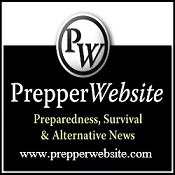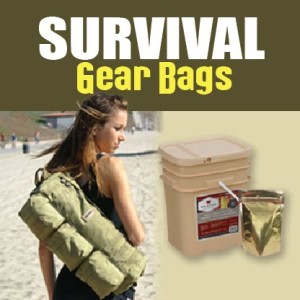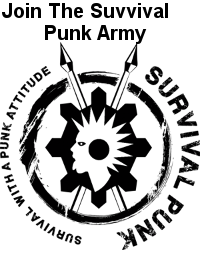DIY activated carbon guest post
Update: I ran this yesterday while on my way back in the car. When I copied and pasted the article the formatting went right out the window and this beautiful article became impossible to read. It is all fixed now and readable. Once again I would like to thank the guys at Zombease for letting me run this post while I’m on vacation. If you have not I suggest you check out what they are doing and give them a like on Facebook.
From use in medical treatments, to simple gardening, water treatment, crafting and more, activated charcoal has proven to be an indispensable resource for thousands of years the world over. It is both readily available and easy to make at home, making it one of the easiest preparations you can make towards outliving the undead.
Only use natural charcoal that is additive and extender free, fuel soaked briquettes and charcoal with extenders can be dangerous to use for the majority of the things listed below.
HOW TO MAKE ACTIVATED CHARCOAL
Seasoned hardwoods such as maple, oak, cherry, beech and ash, produce the best charcoal…but when it comes down to it, any natural source is better than nothing at all. Avoid the use of pallets, furniture, and structural wood when possible. These “found” sources often contain chemical treatments and components that can harm you when off-gassing and/or when consumed.
Small Scale Production
- Cut wood into pieces small enough to grind later.
- Place the wood in a fire, turning and rotating each piece as it burns.
- Burn until evenly charred on all sides, and breakable by hitting with a stick.
- Remove charcoal from the fire and let cool.
- Crush to size, store in a cool dry place, and use as needed.
Large Scale Production
- Cut a 1 foot hole into the side and near the bottom of a large metal container.
- Drill or cut 9 holes, 1/2 inch – 1 inch in diameter, into the bottom of another metal container that can fit inside the larger of the two.
- Remove the top of the large container and place 2-4 cinder blocks or layered bricks inside for use as a base, place 1 per side opposite each other.
- Place the small container inside the large one, and rest it on top of the blocks/bricks.
- Fill the small container with the wood meant for use as charcoal, and seal it.
- Fill the large container with scrap and debris wood and light it on fire.
- Monitor the Char Drums and keep them burning for a few hours transforms into charcoal.
- Let the fire go extinguish itself and let the remnants cool.
- Remove the charcoal from the smaller drum, store in a cool dry place, and use as needed.
USES FOR ACTIVATED CHARCOAL
GARDENING: You can only forage, hunt, and scavenge for so long before resources start to dry up or run out. Successful gardening is essential to long term survival…even when you aren’t trying to recover from a major disaster like a Zombie outbreak.
Soil Additive – Pulverized charcoal, also known as BioChar is a great soil additive for gardening. BioChar can increase soil fertility, agriculture productivity, and even protect against some plant-borne and soil-borne diseases. This highly stable soil additive can be effective for up to thousands of years…well after you’re gone. BioChar is most effective with olive trees, Asian persimmon, quince, lavender, asparagus, okra, parsley, yams, dandelions, apples, cherries, peaches, and other plants that like PH rich soil.
Composting – Adding crushed charcoal to your compost can help reduce ammonia-like odors and enrich the overall mixture. This is a good step towards using it as a soil additive in your long-term survival garden.
MEDICAL: Charcoal had been used for thousands of years to treat a wide variety of ailments, and for good reason too. When possible, seek professional medical advice before attempting any type of self-care.
Drug / Chemical Poisoning – Highly valuable in the treatment of poisonings…accidental or not, activated charcoal can be a literal life saver. Ground into a fine powder and mixed into a slurry with water, activated charcoal can absorb large amounts of both poisons and chemicals from the body. It effectively absorbs toxins and renders them inert as it carries them through the bodily systems and out the other end. DOSE: 10:1 Charcoal Slurry vs. poison.
Snake and Spider Bites – Although activated charcoal has been shown to effectively treat some spider and venomous snake bites as well, we highly recommend seeking further medical attention when available. Applied to the bite area as a mild paste, activated charcoal should absorb most of the venom and help to relieve the pain from the wound. Follow up by taking regular doses of charcoal mixed with water. DOSE: 3 tablespoons of charcoal with 1 glass of water every 2-3 hours for 3 total doses.
Stomach Upset – Charcoal slurry can help treat mild digestive upsets and halt diarrhea…though things might turn a bit black for a day or two. DOSE: 5-10 grams twice daily till symptoms are gone.
Food Poisoning – This serious condition can cause life threatening dehydration and death. Activated charcoal can ease the symptoms of most food poisonings. DOSE: About 20 grams of activated charcoal, taken 2-3 times daily.
Ulcers – An extremely painful and potentially dangerous condition, ulcers can be effectively treated with activated charcoal. DOSE: 5-10 grams twice daily or as needed.
Viruses – Though we doubt it’s effectiveness against a Zombie Virus, activated charcoal has been shown to assist in the recovery from both cold and flu viruses, not to mention cholera and many other infectious conditions that effect the digestive tract. DOSE: 5-10 grams twice daily or as needed.
Wound Dressing – Applied as a poultice, activated charcoal can help reduce the risk of infection in minor wounds. Change the bandage and charcoal routinely every 30 minutes or as needed.
Radiation – Various studies have shown that activated charcoal can neutralize small doses of radiation poisoning. While it isn’t the best reliable way to treat RAD poisoning, it’s better than nothing at all. DOSE: 10:1 Charcoal vs. RAD dose (or) 1 cup slurry.
Stronger and more effective commercially made charcoal capsules, tablets, and powders are available in many medical supply stores and pharmacies. But the home made stuff will get you by in an emergency, just up the dose a little. Activated charcoal doesn’t go down well as a powder, so always add a bit of water to create a slurry before use.
Don’t bother using activated charcoal with other medications as it may absorb them and inactivate their helpful properties.
Best used during emergency situations, charcoal should not be used for long periods of time without taking the occasional break to let your body recover. Drink lots of water when using charcoal internally as it may act as a constipating agent otherwise.
WATER: The absorbent powers of activated charcoal allows it to take in and purify just about anything that tries to pass through it. This makes it perfect for use in both water and air filters, and is commonly used for both. This natural and highly effective filter for water borne pathogens and contaminates, is capable of removing most bacteria and other harmful substances, including heavy metals and viruses.
How to make a basic water filter – Layer the following, in order, in a container with a spout at the bottom. Coffee filter, bandana, or similar material, 2″-3″ finely crushed charcoal, 2″ fine sand, 1″ finely crushed charcoal, 1″ small stones (if available), 1″fine sand, and 1″ moss, grass, or other porous material. Place the container over a clean basin to catch the filtered water, fill the filter with water, and let it drain.
Survival Straw – Stuff powdered charcoal into a straw or small tube, cover the ends with fine cloth and suck water directly from the source. This method removes the fail safe of boiling or bleach treatment, but is still a step in the right direction.
For more information on water treatment and filtering see: Water: Finding, Collecting, and Treating for Survival
HYGIENE: This important, yet often forgotten and/or neglected step of survival, is key to staving off infections and disease…both of which are likely killers during a Zombie apocalypse or other major disaster. Staying clean can mean staying alive.
Toothpaste – The natural scrubbing and polishing properties of charcoal can act as alternate to toothpaste during an emergency or disaster situation. While your teeth and tongue will be blackened initially, a good rinse with water should remove the excess coloring. And not only can it help polish up the pearly whites, it will absorb and treat any bacteria in your mouth as well…effectively freshening your breath and improving your overall dental health.
Latrine – Dealing with human waste is never pleasant, but it has to be done. After a major disaster, survivors are often left using latrines, buckets, and other alternative methods for disposing of and dealing with human waste. Sprinkling a layer of charcoal/ash over human waste, can help keep waste covered and odors down.
MISC: Like most things survival related, charcoal has a wide variety of uses, you just have to be a little creative to see what you can get out of it.
Fire – Low cost and reliable, charcoal can provide warmth, light, protection, peace of mind, and a place to cook a meal.
Food – Charcoal is safe to cook over, on, or in…though you’ll want to knock the ashes off before you bite down on your meal. Some indigenous tribes even toss whipped eggs and meats straight into the coals of a fire.
Warmth – Whether used indirectly to heat rocks and/or soil for bedding, or directly by way of a small fire, charcoal can help stave off the cold and threat of hypothermia and exposure.
Light – Charcoal doesn’t work well in lanterns, but when used in place it can provide enough light to see and work by. This simple solution is a great way to go for situations that require low level lighting.
Protection – The burning embers of charcoal can be used to temper wooden and metal weapons and tools.
Communication – The ability to leave messages and warning signs for fellow survivors is extremely important…especially is you’re trying to help guide someone to a safe location or away from a dangerous one. Charcoal can be used to messages on just about any surface you can think of…though it will wash off in the rain.
Forging – Capable of burning at extremely high temperatures, charcoal is key to forging with both metal and glass…things you might be doing a lot of during a long-term disaster. Someone is going to have to make your nails, weapons, tools, solar panels, windows, etc., and it might as well be you.
Moisture absorber – Whether used in shoes, packs, other gear, or even storage areas; open pouches and containers of activated charcoal can be helpful for absorbing excess moisture from both materials and air. Using activated charcoal in this way can help reduce the risk of mold, mildew, contamination, and other damages caused by moisture..
IN CONCLUSION: Activated charcoal allows for an incredibly wide variety of survival techniques and uses, and when it’s used properly it has the potential to save your life. For more information and guides to preparedness, Zombies, and Zombie survival, check out our other articles and tips of the day.























Comments are closed.